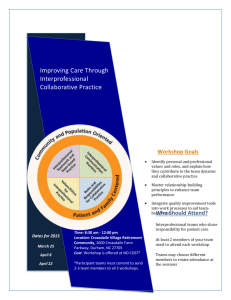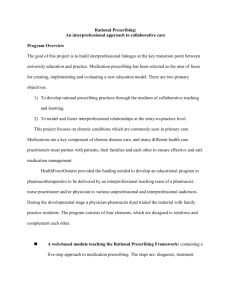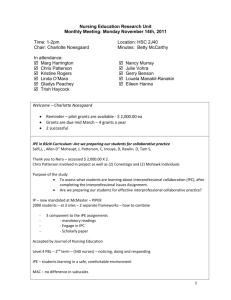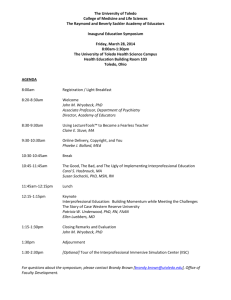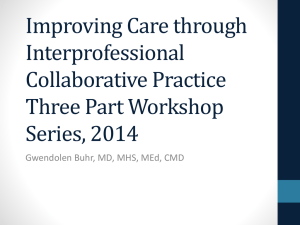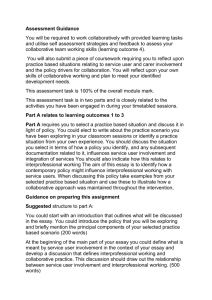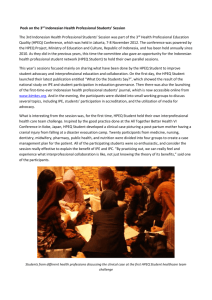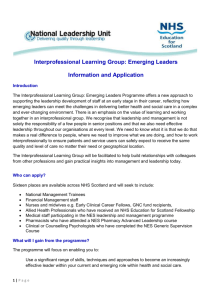QA Learning Plan SAMPLE form-Rev 2016v2
advertisement
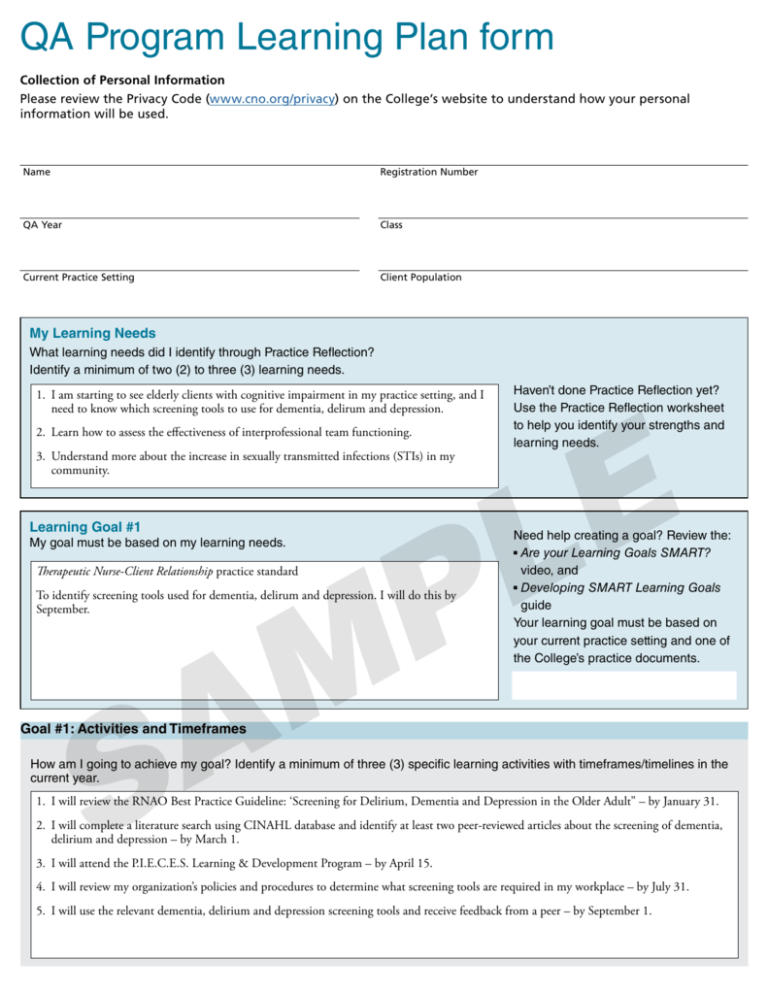
QA Program Learning Plan form Collection of Personal Information Please review the Privacy Code (www.cno.org/privacy) on the College’s website to understand how your personal information will be used. Name Registration Number QA Year Class Current Practice Setting Client Population My Learning Needs What learning needs did I identify through Practice Reflection? Identify a minimum of two (2) to three (3) learning needs. 1.I am starting to see elderly clients with cognitive impairment in my practice setting, and I need to know which screening tools to use for dementia, delirum and depression. E L 2. Learn how to assess the effectiveness of interprofessional team functioning. 3.Understand more about the increase in sexually transmitted infections (STIs) in my community. P M Learning Goal #1 My goal must be based on my learning needs. Therapeutic Nurse-Client Relationship practice standard To identify screening tools used for dementia, delirum and depression. I will do this by September. A S Goal #1: Activities and Timeframes Haven’t done Practice Reflection yet? Use the Practice Reflection worksheet to help you identify your strengths and learning needs. Need help creating a goal? Review the: Are your Learning Goals SMART? video, and Developing SMART Learning Goals guide Your learning goal must be based on your current practice setting and one of the College’s practice documents. ■ ■ How am I going to achieve my goal? Identify a minimum of three (3) specific learning activities with timeframes/timelines in the current year. 1. I will review the RNAO Best Practice Guideline: ‘Screening for Delirium, Dementia and Depression in the Older Adult” – by January 31. 2.I will complete a literature search using CINAHL database and identify at least two peer-reviewed articles about the screening of dementia, delirium and depression – by March 1. 3. I will attend the P.I.E.C.E.S. Learning & Development Program – by April 15. 4. I will review my organization’s policies and procedures to determine what screening tools are required in my workplace – by July 31. 5. I will use the relevant dementia, delirium and depression screening tools and receive feedback from a peer – by September 1. Learning Goal #2 Need help creating a goal? Review the: Are your Learning Goals SMART? video, and Developing SMART Learning Goals guide Your learning goal must be based on your current practice setting and one of the College’s practice documents. My goal must be based on my learning needs. ■ Professional Standards practice standard ■ I want to compare tools for evaluating interprofessional team functioning. I will achieve this by November 30. Goal #2: Activities and Timeframes How am I going to achieve my goal? Identify a minimum of three (3) specific learning activities with timeframes/timelines in the current year. 1. I will review the Team Observed Structured Clinical Encounter (TOSCE) developed by McMaster University – by February 20. 2.I will research “Interprofessional Collaborative Competency and Evaluation tools” using CINAHL database and obtain at least four scholarly articles – by March 30. 3.June: I will attend the “Educating Health Professionals in Interprofessional Care: Advancing the Future of Healthcare through Interprofessional Learning” conference in Toronto. 4. I will prepare an analysis of three valid interprofessional evaluation tools – by October 15. E L 5. I will present the analysis to my interprofessional team – by November 30. Learning Goal #3 P M My goal must be based on my learning needs. Nurse Practitioner: Practice Standard I want to develop strategies to address the increase of sexually transmitted infections (STIs) among teenagers in my community. I want to start implementing the strategies by late fall. A S Goal #3: Activities and Timeframes Your learning goal must be based on your current clinical practice and the Nurse Practitioner practice standard. How am I going to achieve my goal? Identify a minimum of three (3) specific learning activities with timeframes/timelines in the current year. 1. January: Set up focus groups with teenagers in the community to gather data and better understand the reason for the increase in STIs. 2. February: Conduct a literature review on STIs in teenager population. 3. February: Review case studies related to STIs in teenager population using UpToDate database. 4. March: I will be mentored by an NP colleague with expertise in managing STIs. 5. March: Conduct educational sessions at the local high schools on the risks of STIs. 6. July: Submit a proposal to run a sexual health clinic on weekends and evenings at the local community centre. 7. September: Meet with other members of the sexual health care team to gain support to operate a full-time sexual health clinic. How do my learning goals support my commitment to continuing competency? How does my learning relate to the competencies of my practice? Learning goal #1: I remain competent by improving my knowledge related to assessing and screening for the meaning behind my clients’ behaviours. My enhanced knowledge will help me to develop and maintain therapeutic relationships and promote quality care. Continue to maintain and update your Learning Plan throughout the year. As well, I am sharing my new evidence-based knowledge with colleagues. Learning Goal #2: I remain competent by learning about current trends in health care that promote effective team functioning and communication. I am aware how interprofessional care contributes to my clients’ outcomes. Learning Goal #3 I am learning about and developing strategies to manage the STIs in my community. Evaluation of changes/outcomes to my practice What did I learn? What impact has my Learning Plan had on my practice? I know which tools to use, and how to use them, for screening clients with the different types of cognitive issues. I have been able to contribute my new learning during case conferences and share it with co-workers. I have learned that all behaviour has meaning and that this can significantly impact the ability of nurses to provide care if it’s not recognized. E L I am more aware of the competencies required to improve interprofessional relationships within the health care team. I have learned how to measure interprofessional collaboration. An outcome of my interprofessional collaboration is a decrease in client care errors. I have started developing strategies with my colleagues to decrease the number of STIs in my community. There has been an increase in the number of clients coming into the clinic to be screened. You can print your Learning Plan for your records. A S P M DEC 2015 2015-119

